
Deir el-Medina, or Dayr al-Madīnah, is an ancient Egyptian workmen's village which was home to the artisans who worked on the tombs in the Valley of the Kings during the 18th to 20th Dynasties of the New Kingdom of Egypt The settlement's ancient name was Setmaat, and the workmen who lived there were called "Servants in the Place of Truth". During the Christian era, the temple of Hathor was converted into a Monastery of Saint Isidorus the Martyr from which the Egyptian Arabic name Deir el-Medina is derived.

Amenhotep I or Amenophis I, was the second Pharaoh of the 18th Dynasty of Egypt. His reign is generally dated from 1526 to 1506 BC.

Seti II was the fifth pharaoh of the Nineteenth Dynasty of Egypt and reigned from c. 1203 BC to 1197 BC. His throne name, Userkheperure Setepenre, means "Powerful are the manifestations of Re, the chosen one of Re." He was the son of Merneptah and Isetnofret II and occupied the throne during a period known for dynastic intrigue and short reigns, and his rule was no different. Seti II had to deal with many serious plots, most significantly the accession of a rival king named Amenmesse, possibly a half brother, who seized control over Thebes and Nubia in Upper Egypt during his second to fourth regnal years.
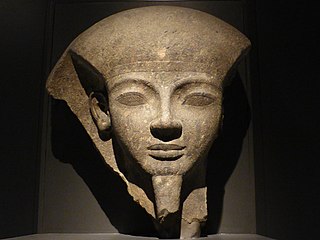
Ramesses VI Nebmaatre-Meryamun was the fifth ruler of the Twentieth Dynasty of Egypt. He reigned for about eight years in the mid-to-late 12th century BC and was a son of Ramesses III and queen Iset Ta-Hemdjert. As a prince, he was known as Ramesses Amunherkhepeshef and held the titles of royal scribe and cavalry general. He was succeeded by his son, Ramesses VII Itamun, whom he had fathered with queen Nubkhesbed.

Usermaatre Setepenre Meryamun Ramesses VII was the sixth pharaoh of the 20th Dynasty of Ancient Egypt. He reigned from about 1136 to 1129 BC and was the son of Ramesses VI. Other dates for his reign are 1138–1131 BC. The Turin Accounting Papyrus 1907+1908 is dated to Year 7 III Shemu day 26 of his reign and has been reconstructed to show that 11 full years passed from Year 5 of Ramesses VI to Year 7 of his reign.

Sekhemre Khutawy Amenemhat Sobekhotep was an Egyptian pharaoh of the early 13th Dynasty.

Sennedjem was an Ancient Egyptian artisan who was active during the reigns of Seti I and Ramesses II. He lived in Set Maat, contemporary Deir el-Medina, on the west bank of the Nile, opposite Thebes. Sennedjem had the title "Servant in the Place of Truth". He was buried along with his wife, Iyneferti, and members of his family in a tomb in the village necropolis. His tomb was discovered January 31, 1886. When Sennedjem's tomb was found, it contained furniture from his home, including a stool and a bed, which he used when he was alive.
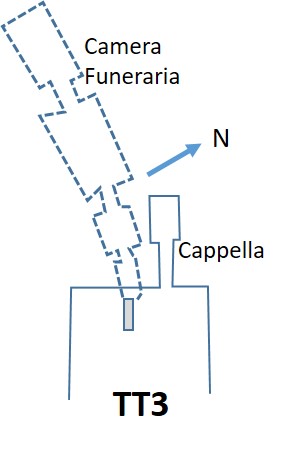
The Theban Tomb TT3 is located in Deir el-Medina, part of the Theban Necropolis, on the west bank of the Nile, opposite to Luxor. It is the burial place of the ancient Egyptian artisan, Pashedu and his family.
Qen was an Ancient Egyptian artisan. Qen lived in Deir el-Medina on the west bank of the Nile, opposite Thebes, during the reigns of Ramesses II. His titles included Servant in the Place of Truth, meaning that he worked on the excavation and decoration of nearby royal tombs. He was buried in a tomb in the village necropolis.
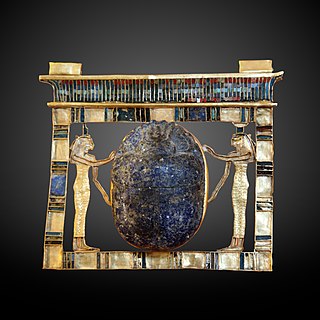
Paser was an ancient Egyptian noble who served as vizier during the reigns of Seti I and Ramesses II in the 19th Dynasty. He would later also become High Priest of Amun.

The Theban Tomb TT359 is located in Deir el-Medina, part of the Theban Necropolis, on the west bank of the Nile, opposite to Luxor. It is the burial place of the ancient Egyptian workman Inherkhau, who was Foreman of the Lord of the Two Lands in the Place of Truth during the reigns of Ramesses III and Ramesses IV. He also owned Tomb TT299. Inherkau was the son of the similarly titled Foreman Huy. Inherkau's wife was named Wab.
Khabekhnet was an Ancient Egyptian artisan. Khabekhnet lived in Deir el-Medina on the west bank of the Nile, opposite Thebes, during the reign of Ramesses II. He was a son of Sennedjem and Iyneferti, and was married to Sahti and probably Isis. He was buried in Tomb TT2 in the village necropolis.

Ramose was an ancient Egyptian scribe and artisan who lived in Deir el-Medina on the west bank of the Nile, opposite Thebes, during the reigns of Ramesses II. He held the position of Scribe of the Tomb, the highest administrative position for a scribe in Deir el-Medina, from around years 5 to 38 of Ramesses II's reign. He was buried in a tomb in the village necropolis.

The Theban Tomb TT10 is located in Deir el-Medina, part of the Theban Necropolis, on the west bank of the Nile, opposite Luxor. It is the burial place of the ancient Egyptian artisan named Penbuy, who lived during the 19th Dynasty. Penbuy shared his tomb with Kasa, also a Servant in the Place of Truth.
The use of urban planning in ancient Egypt is a matter of continuous debate. Because ancient sites usually survive only in fragments, and many ancient Egyptian cities have been continuously inhabited since their original forms, relatively little is actually understood about the general designs of Egyptian towns for any given period.
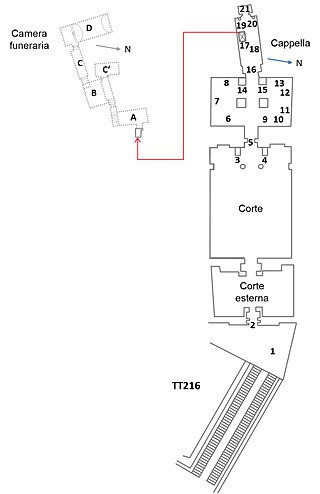
The Theban Tomb TT216 is located in Deir el-Medina, part of the Theban Necropolis, on the west bank of the Nile, opposite to Luxor. It is the burial place of the ancient Egyptian artisan named Neferhotep, who lived during the 19th Dynasty. Neferhotep would have lived in Deir el-Medina during the reigns of Ramesses II, Merenptah and Sethi II.
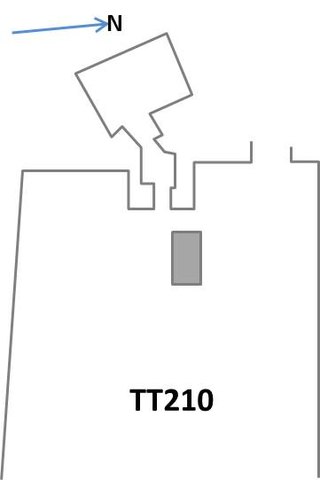
The Theban Tomb TT210, part of the Theban Necropolis, is located in Deir el-Medina, on the west bank of the Nile, opposite to Luxor. TT210 is the burial place of the ancient Egyptian artisan named Raweben, who lived during the 19th Dynasty. Raweben would have lived in Deir el-Medina during the reign of Ramesses II.

The Theban Tomb TT211 is located in Deir el-Medina, part of the Theban Necropolis, on the west bank of the Nile, opposite to Luxor.
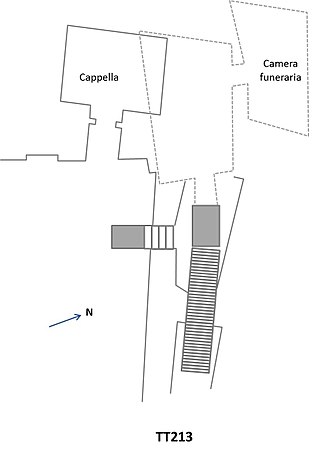
The Theban Tomb TT213 is located in Deir el-Medina, part of the Theban Necropolis, on the west bank of the Nile, opposite to Luxor.

The Eighteenth Dynasty of Egypt is classified as the first dynasty of the New Kingdom of Egypt, the era in which ancient Egypt achieved the peak of its power. The Eighteenth Dynasty spanned the period from 1550/1549 to 1292 BC. This dynasty is also known as the Thutmoside Dynasty) for the four pharaohs named Thutmose.

















